
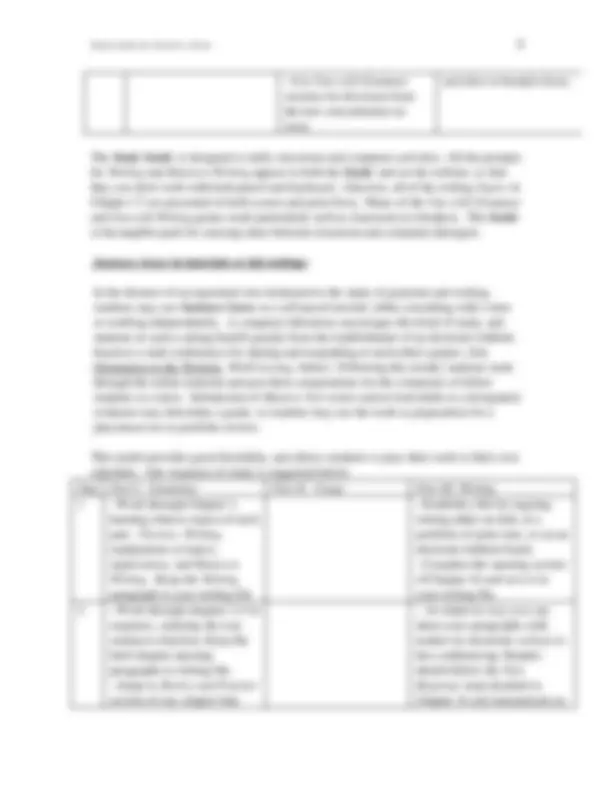
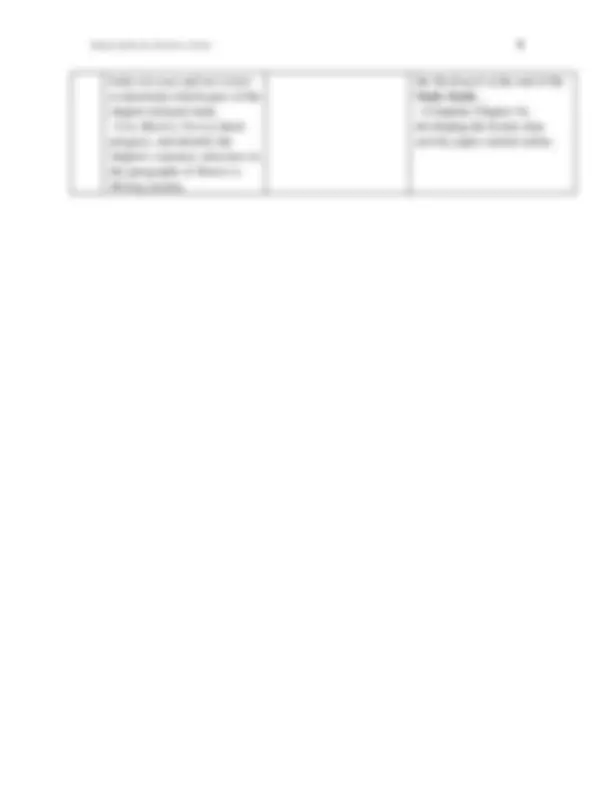
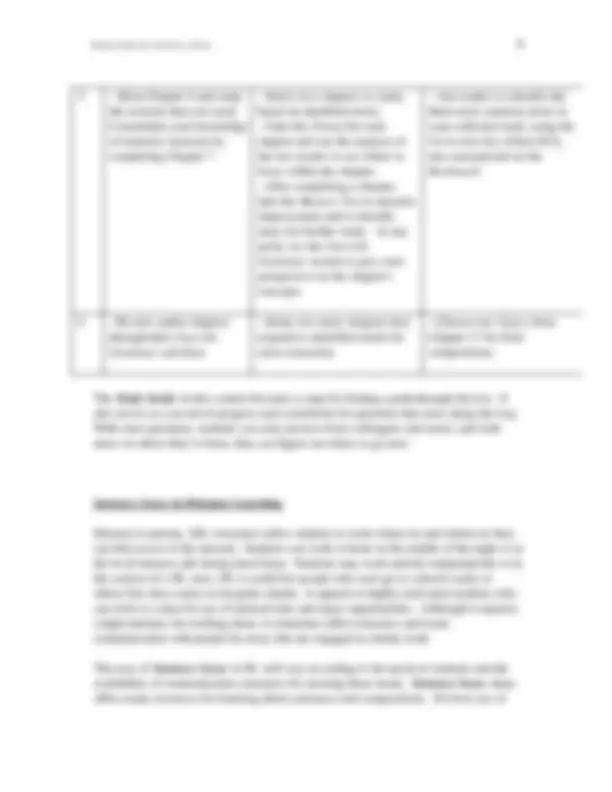

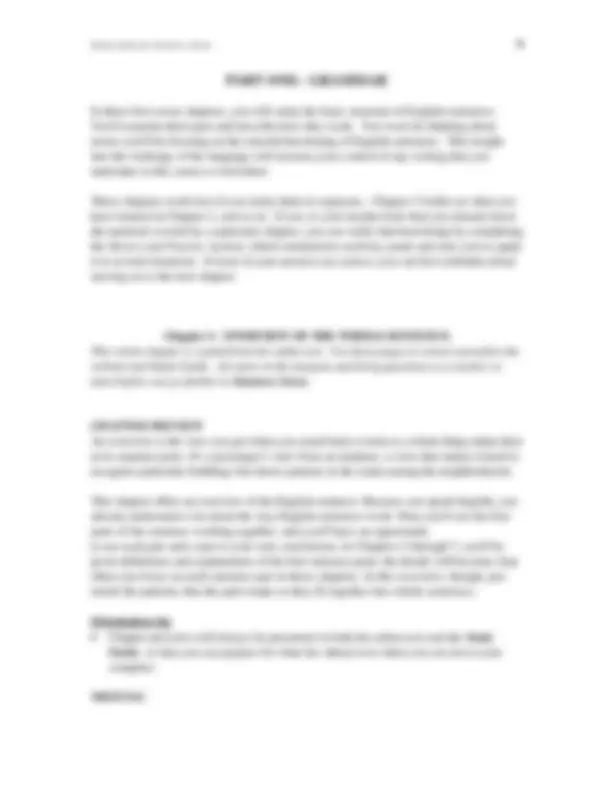
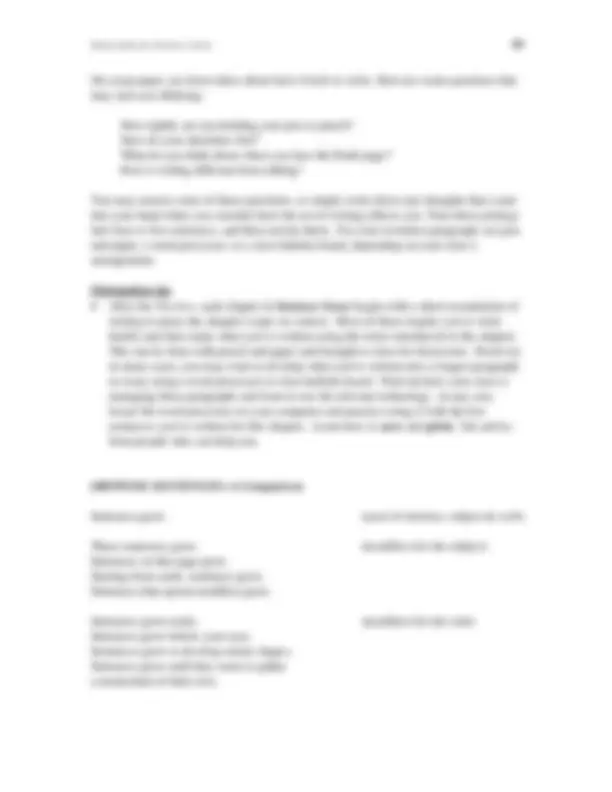
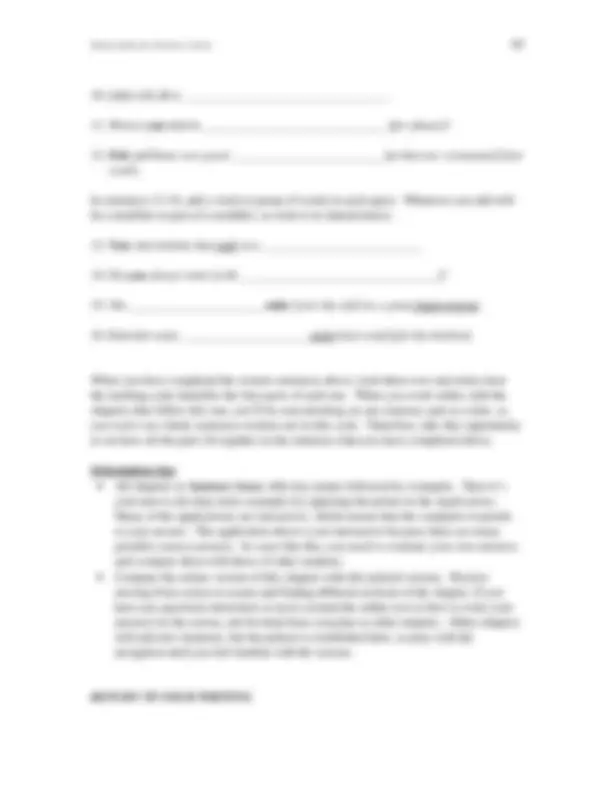
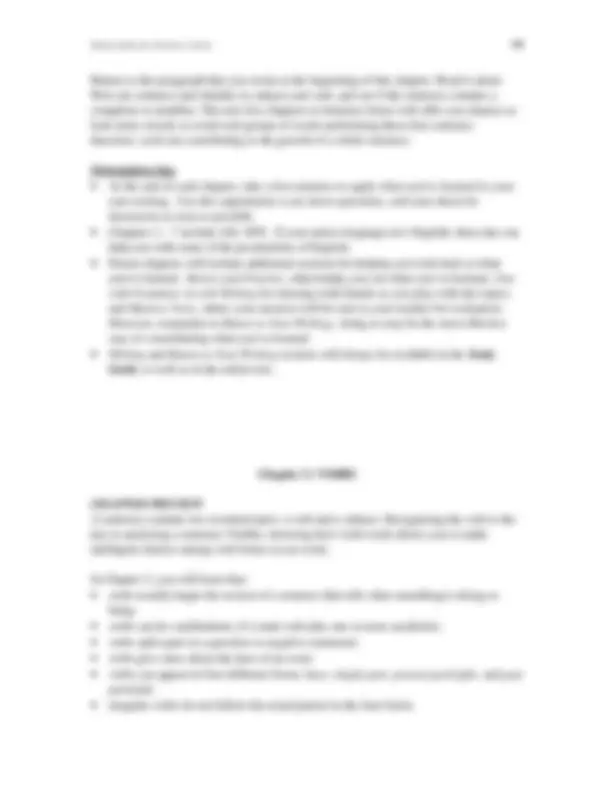
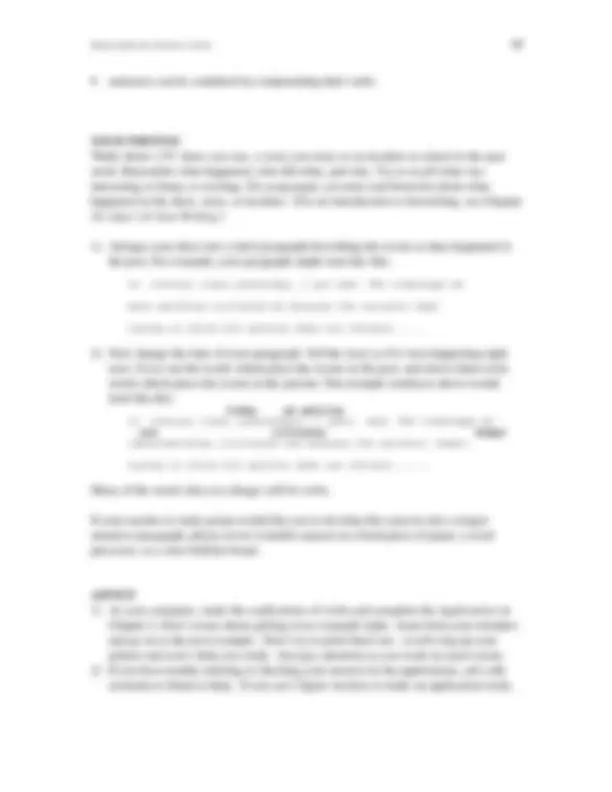
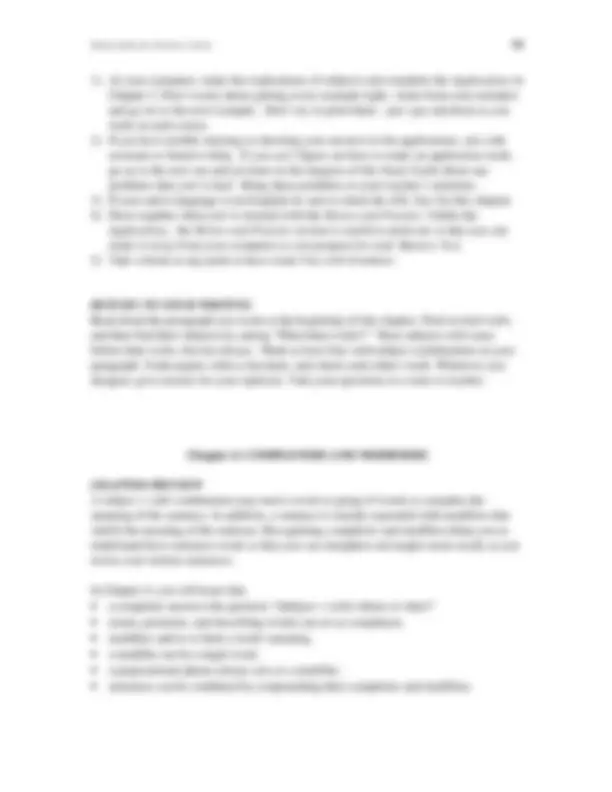
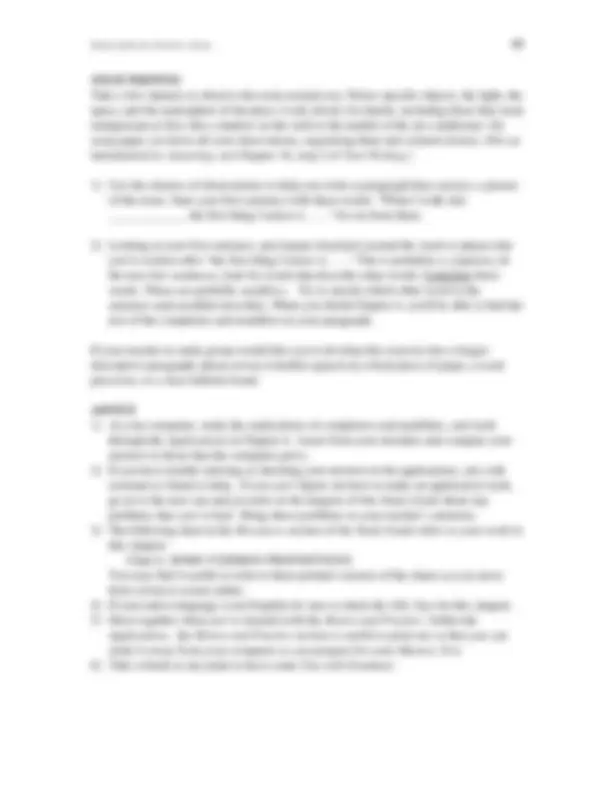
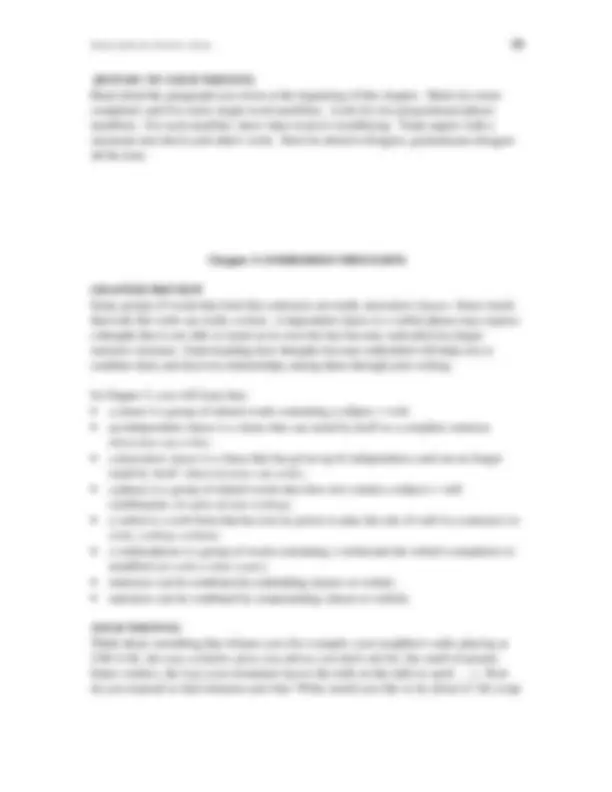
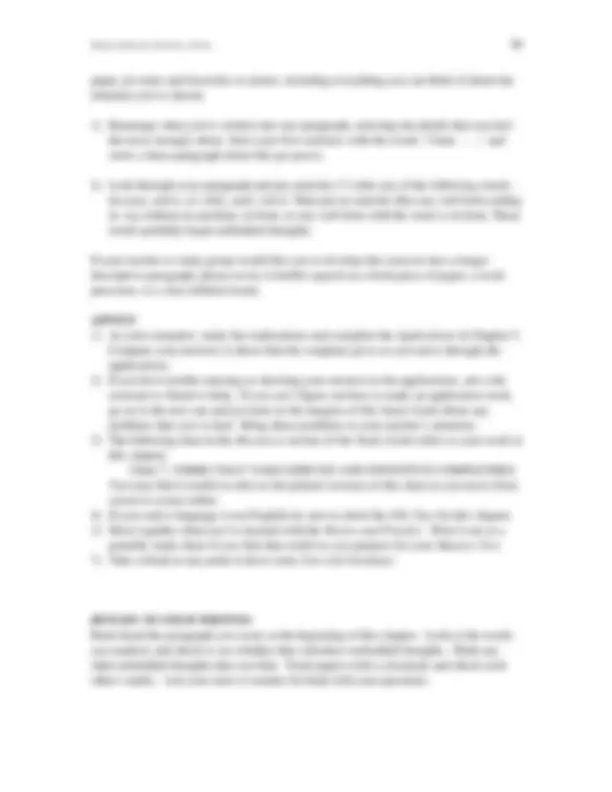
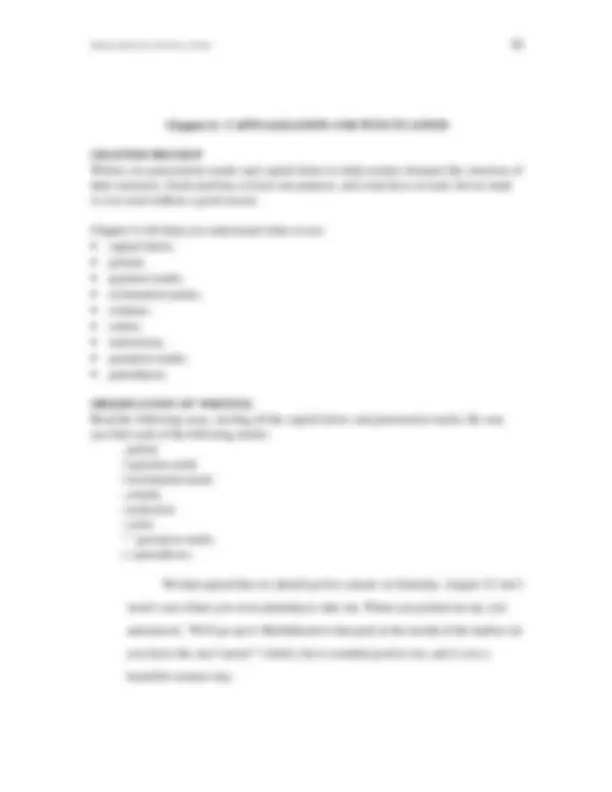
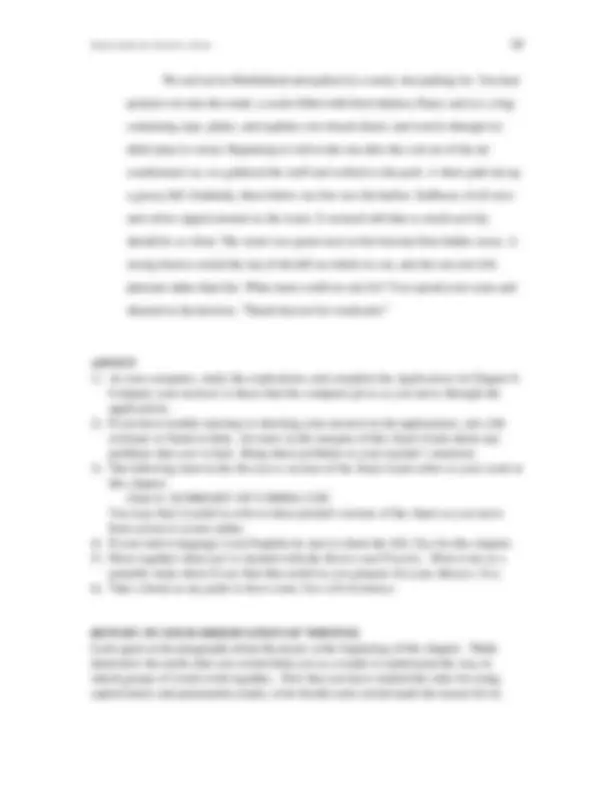
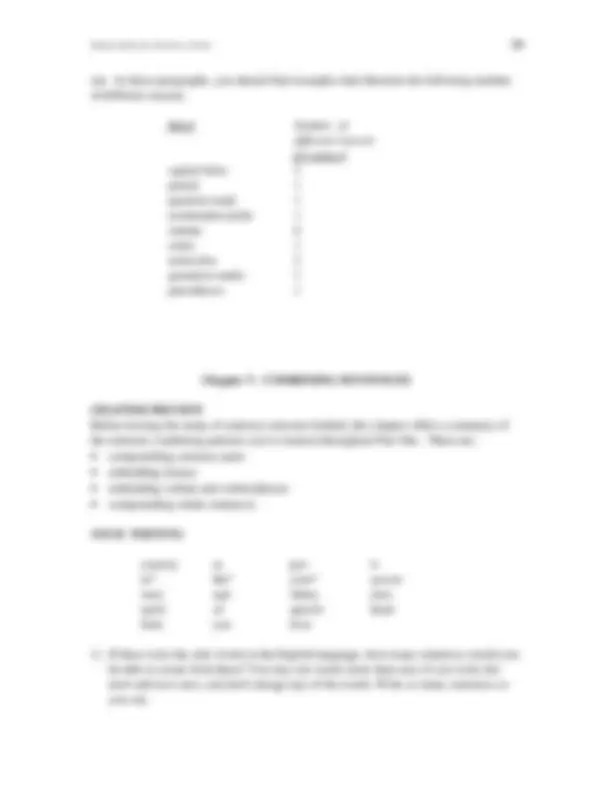
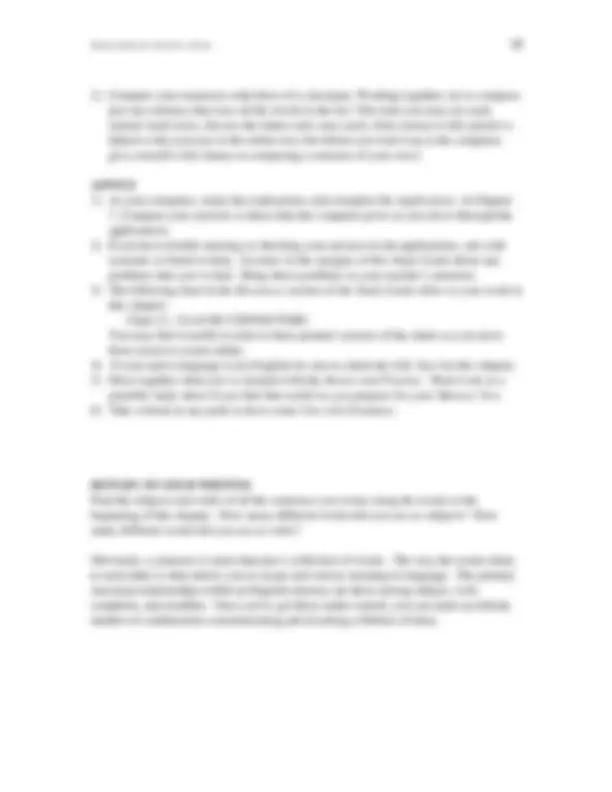
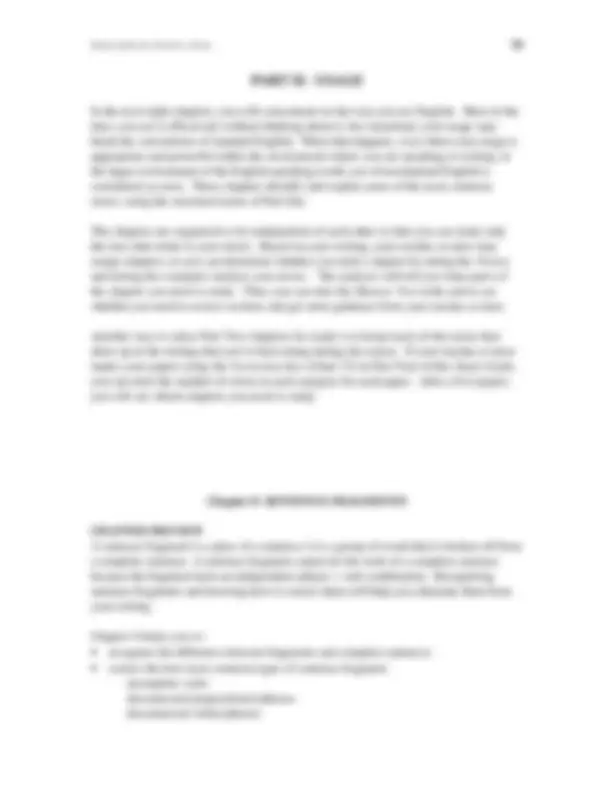
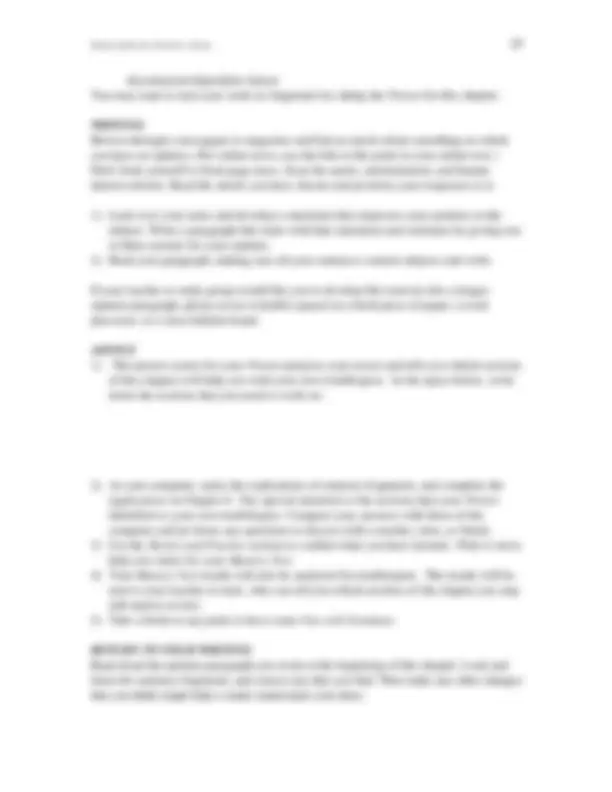
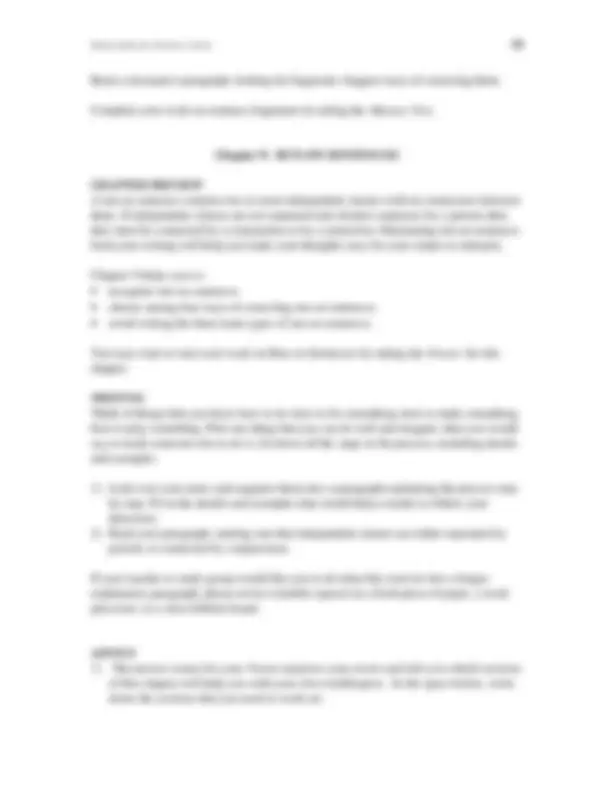
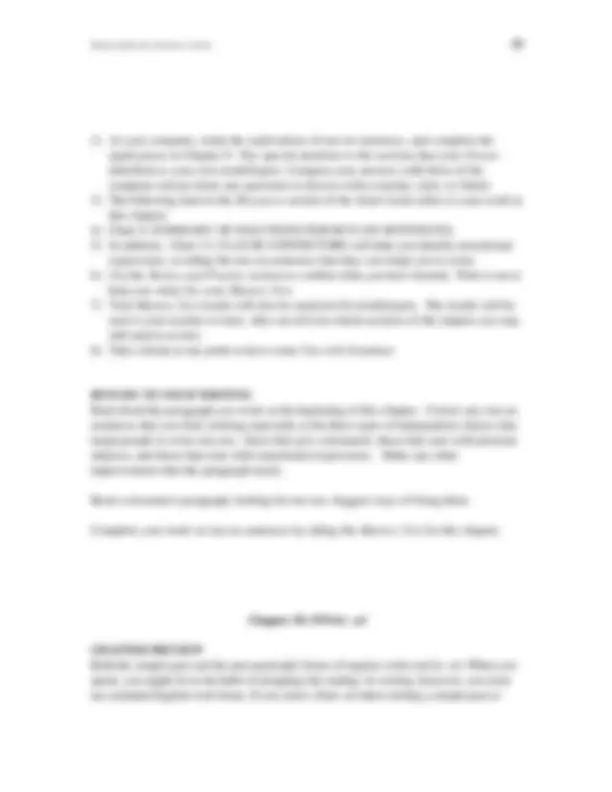
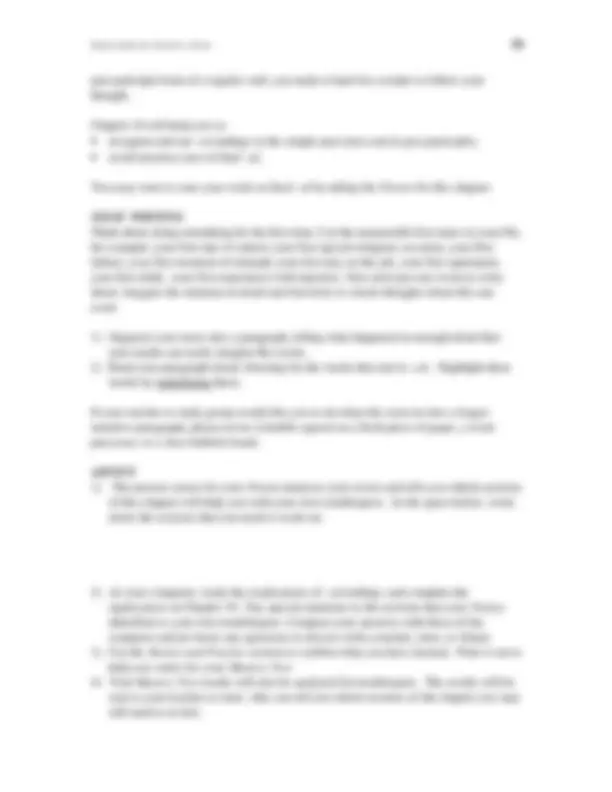
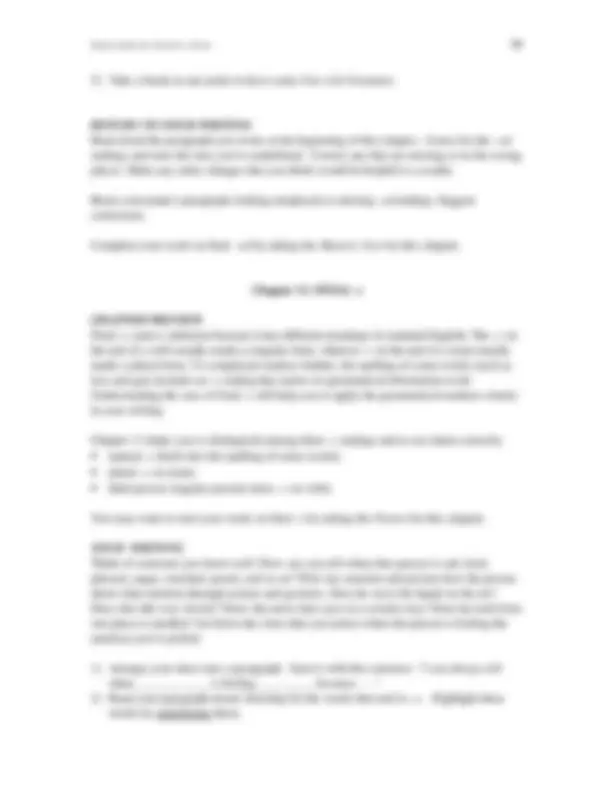
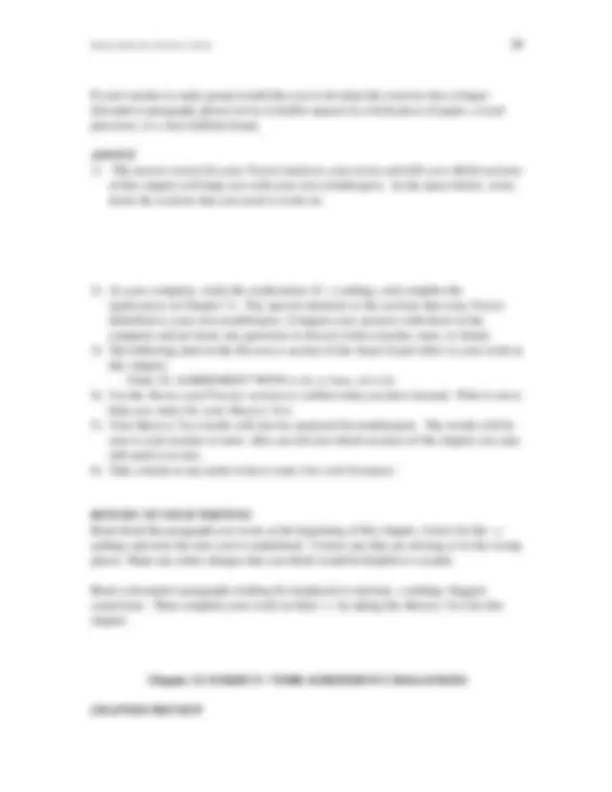
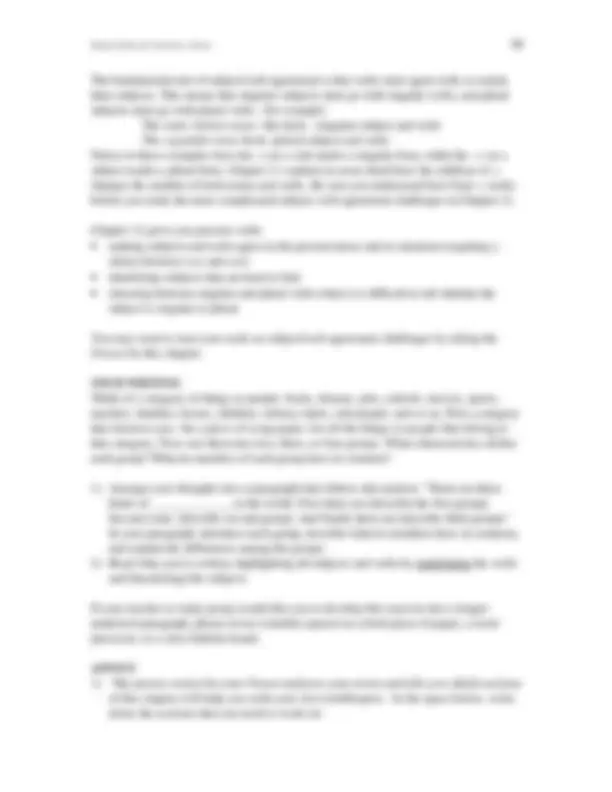
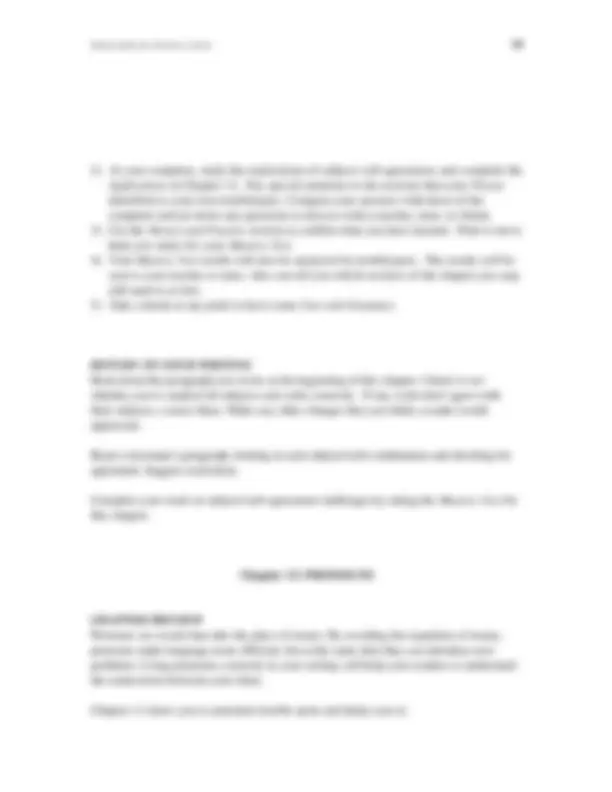
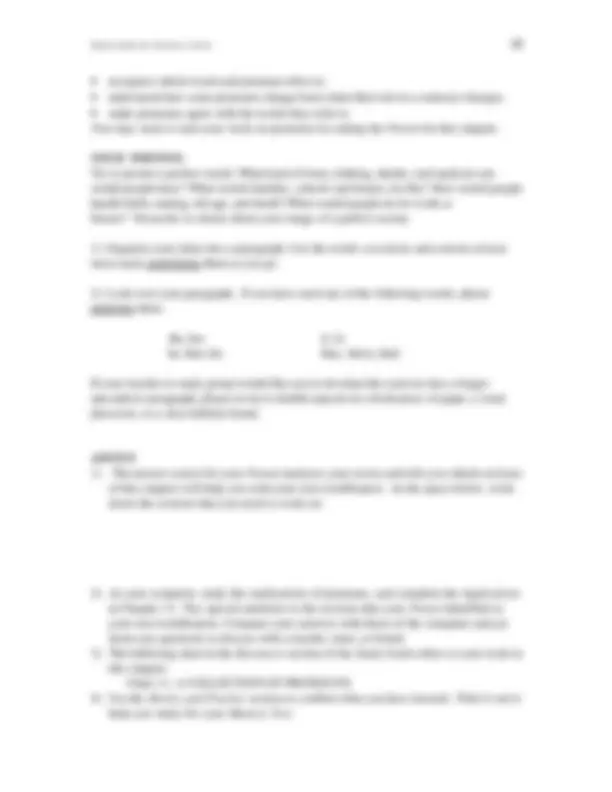
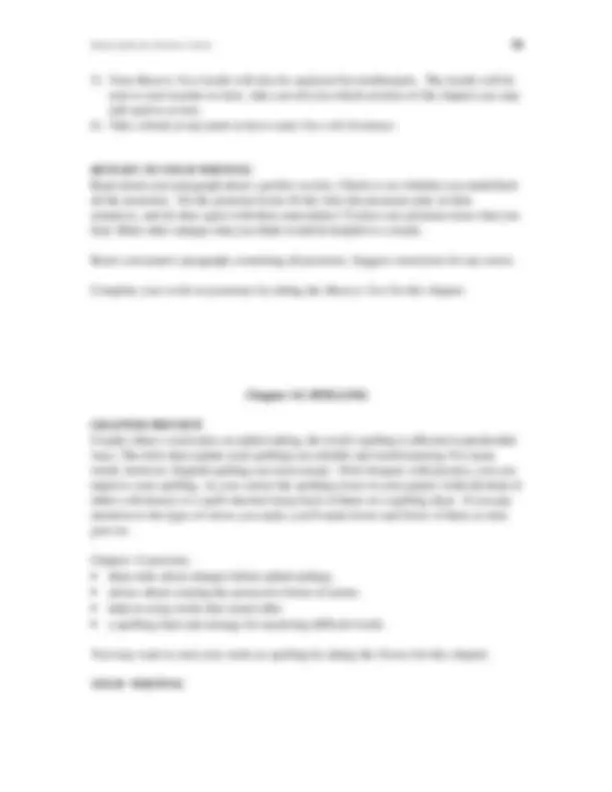
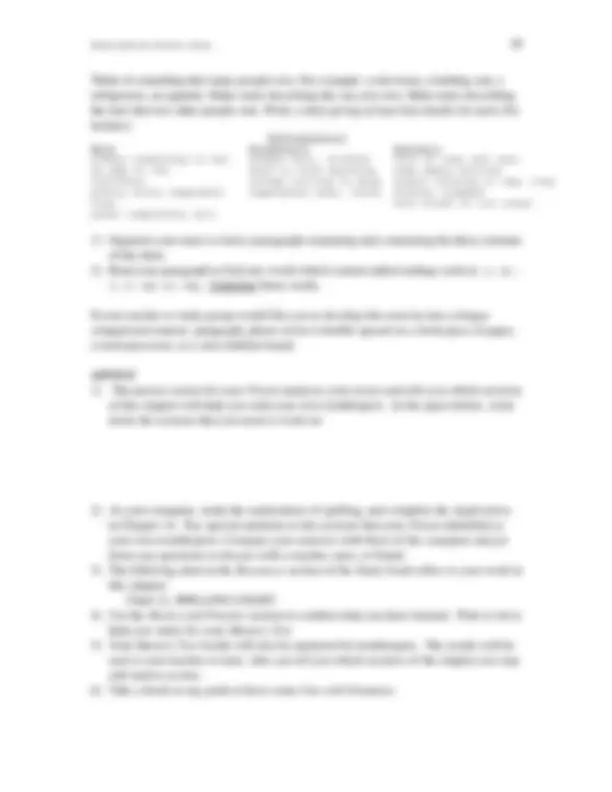
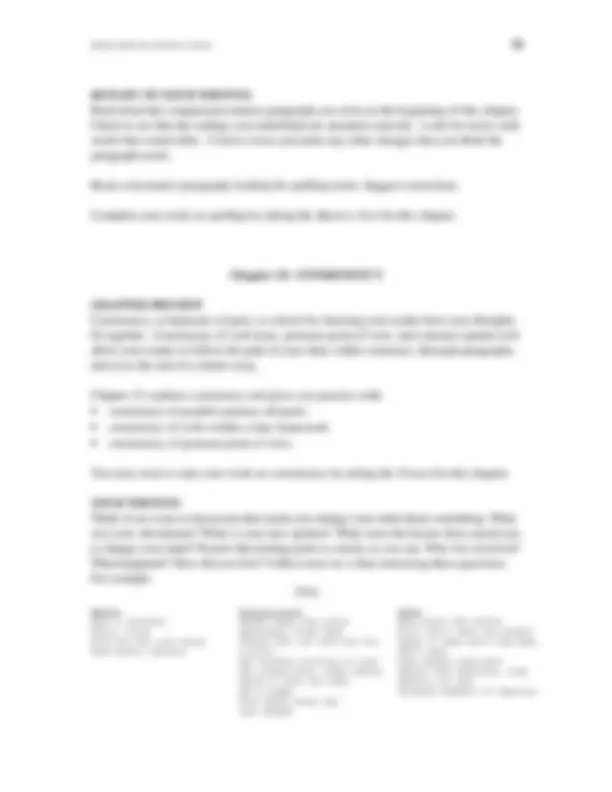
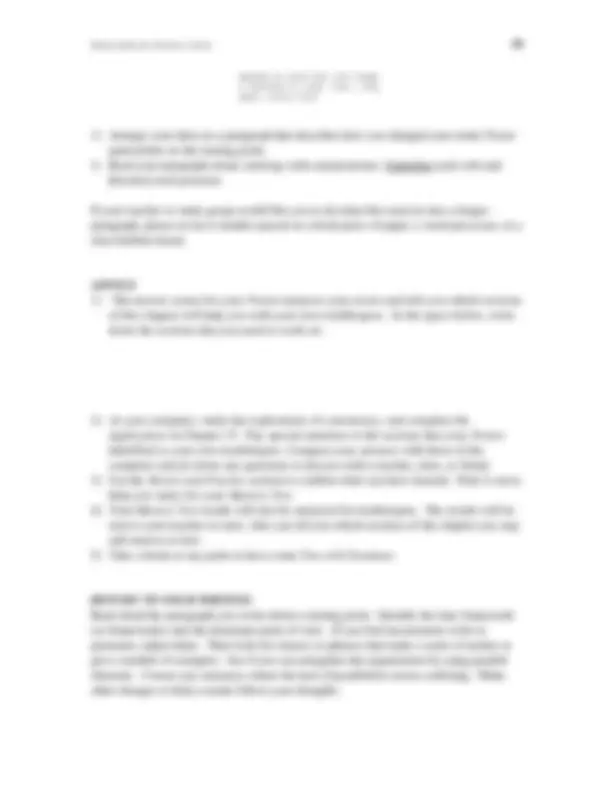

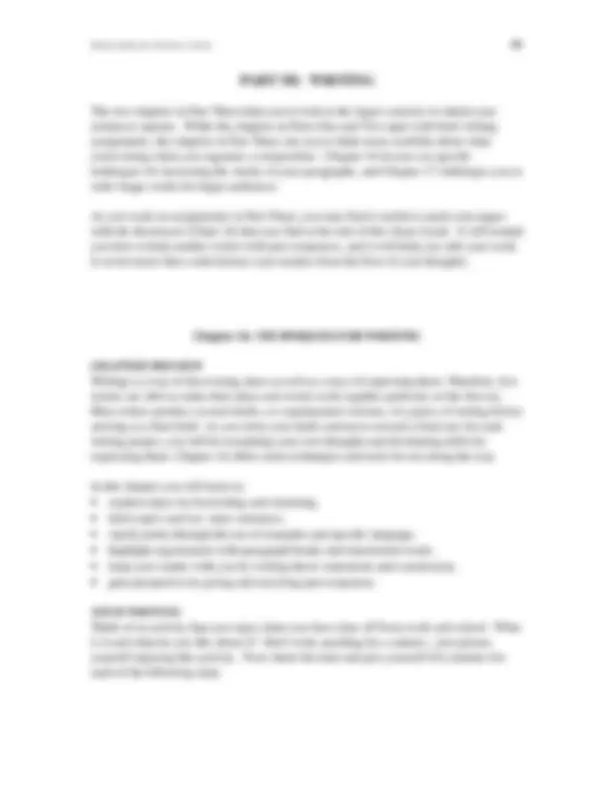
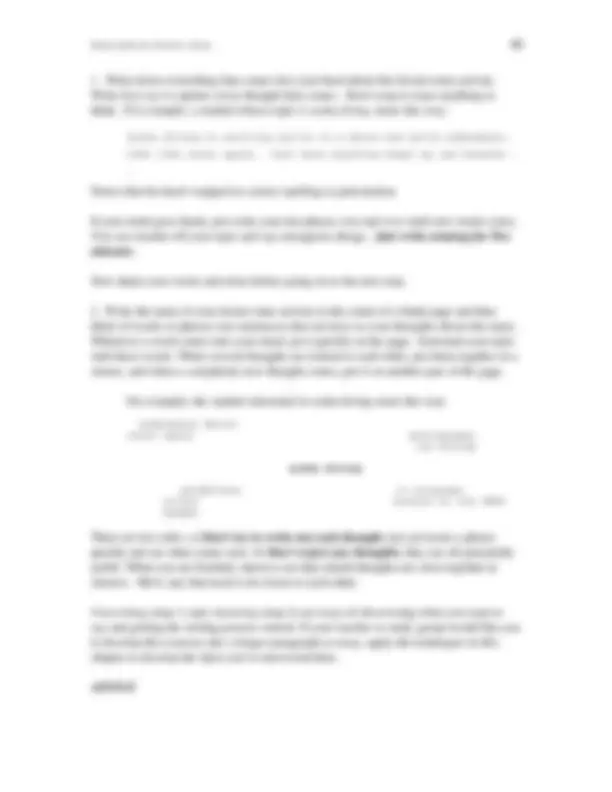
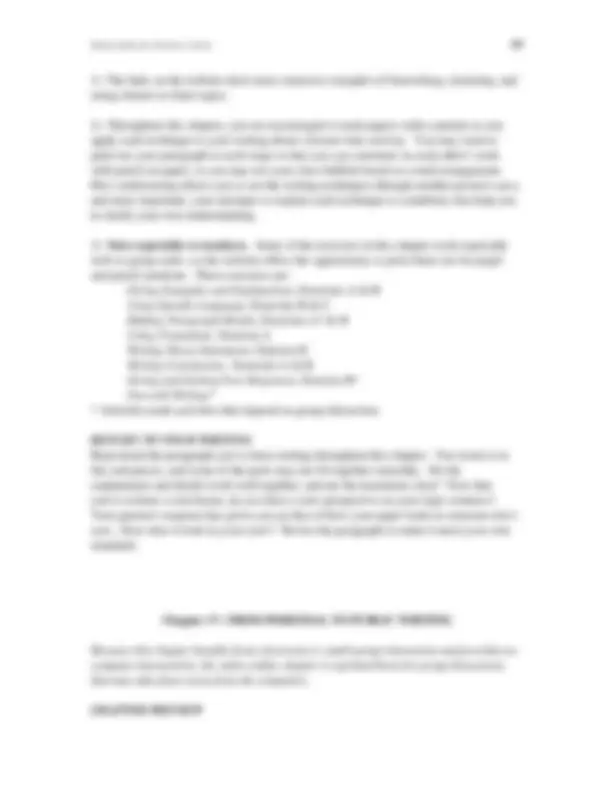
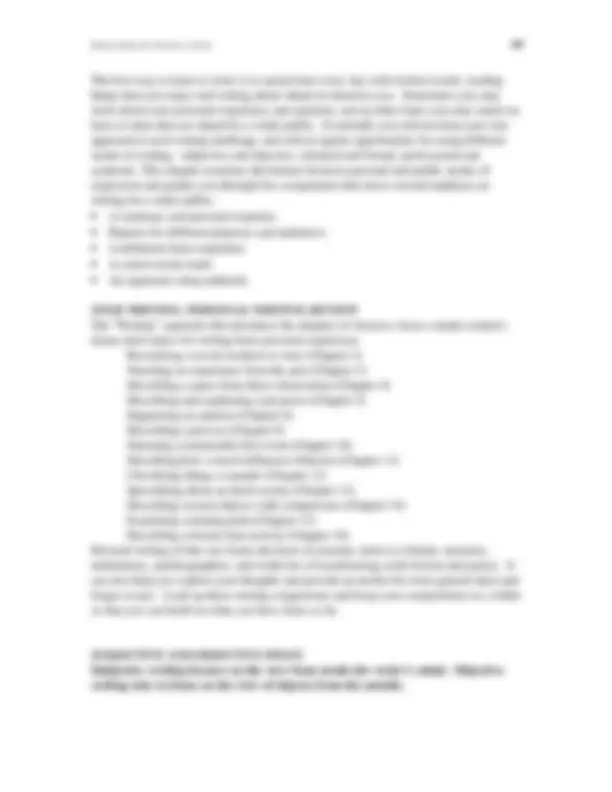
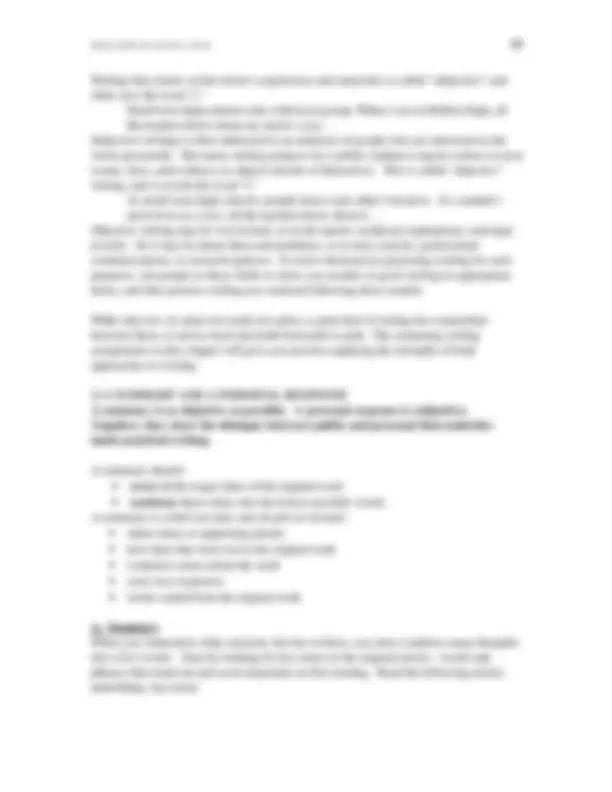
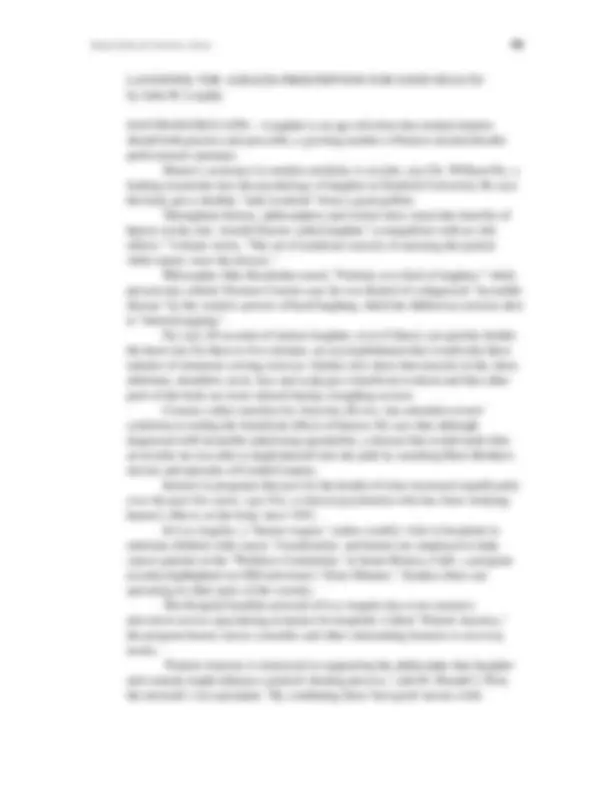

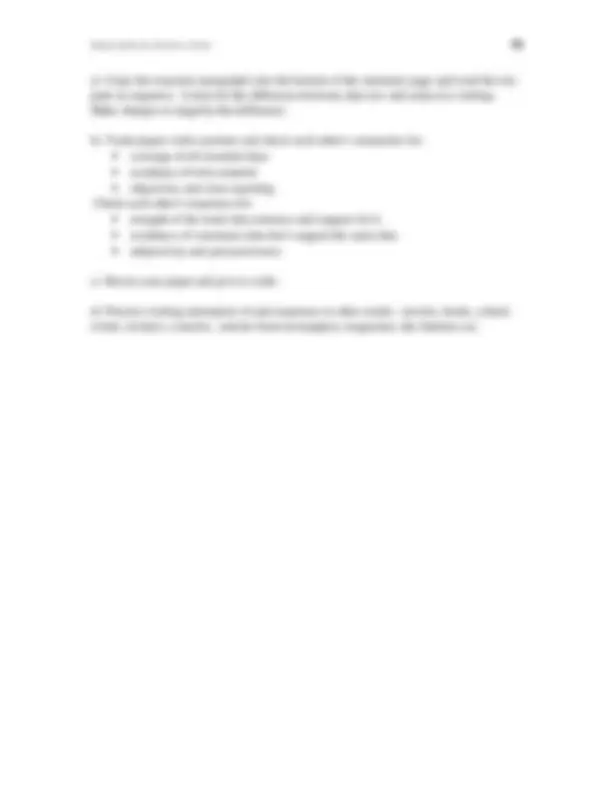
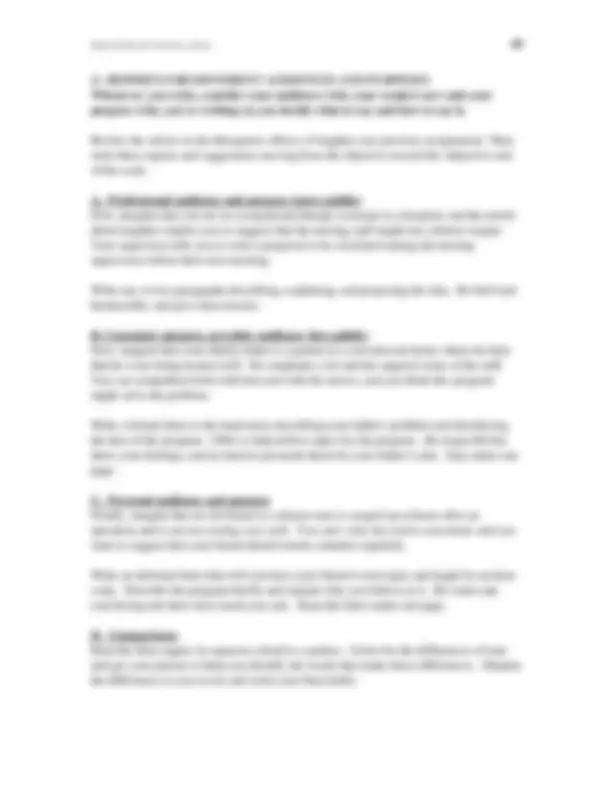
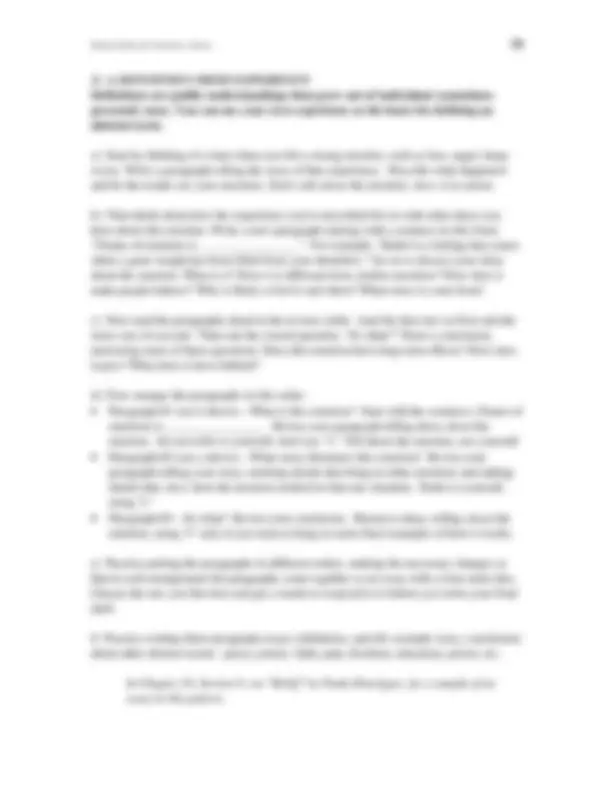
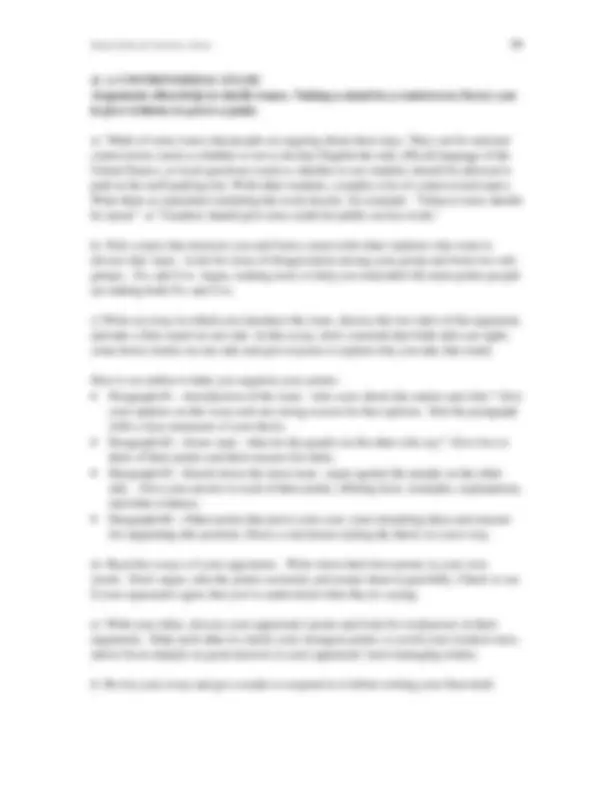
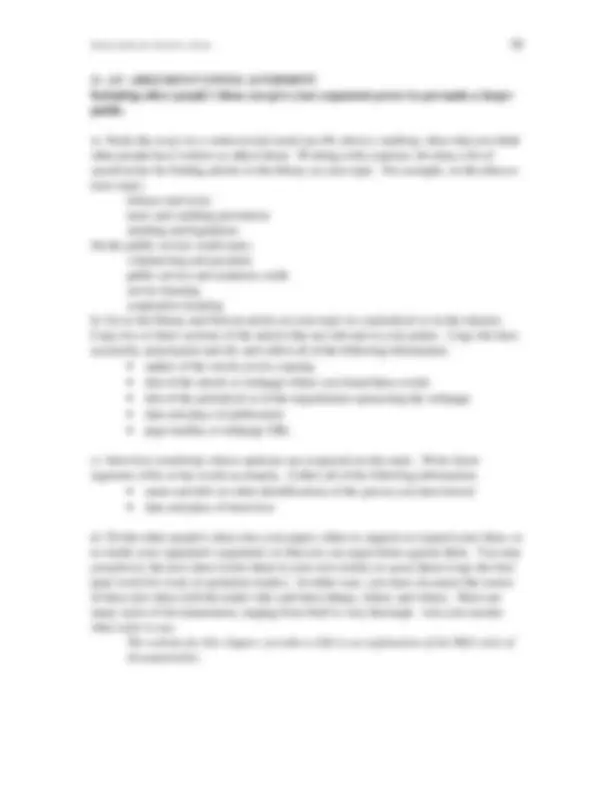

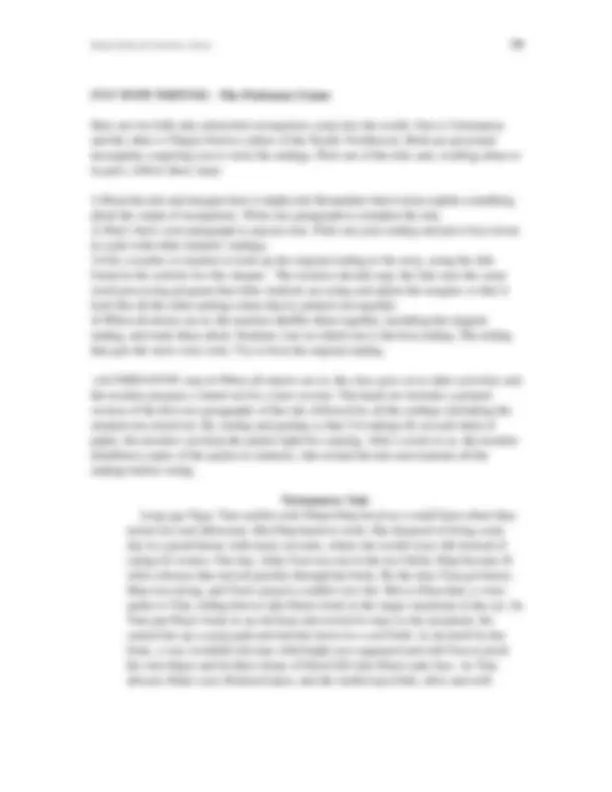
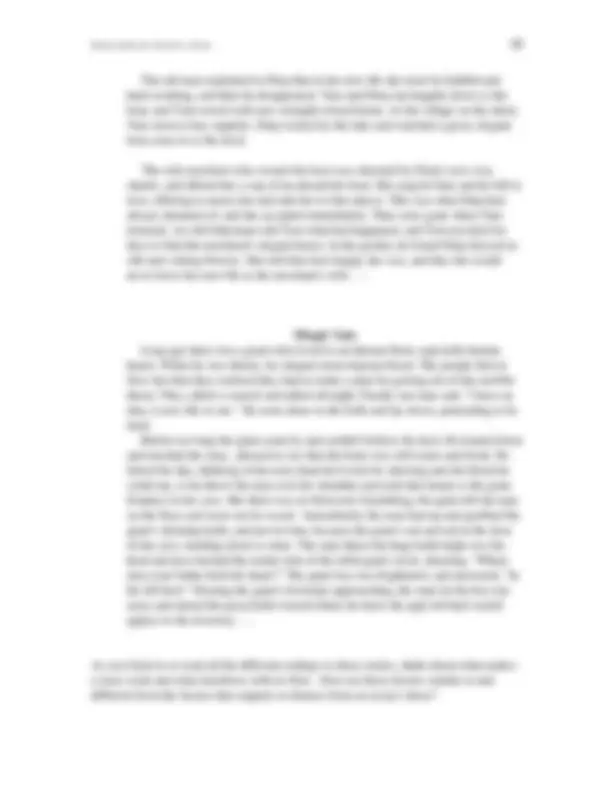

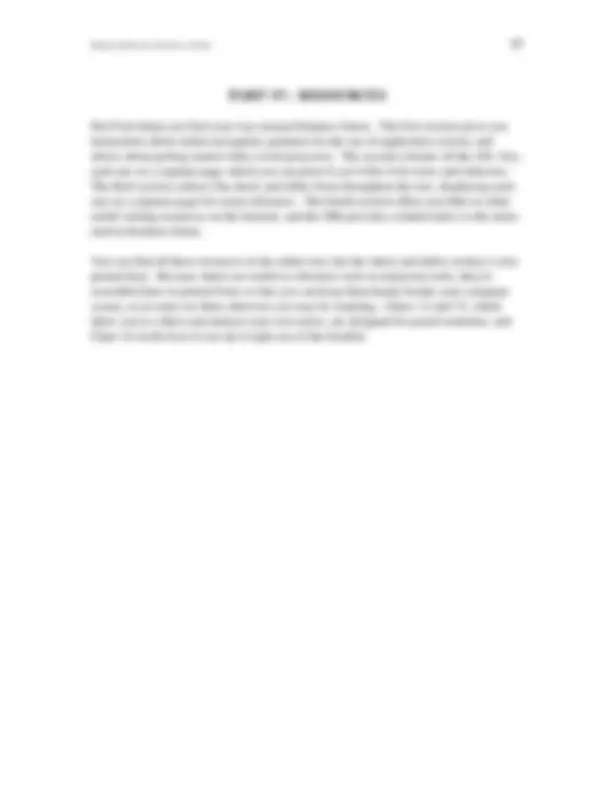
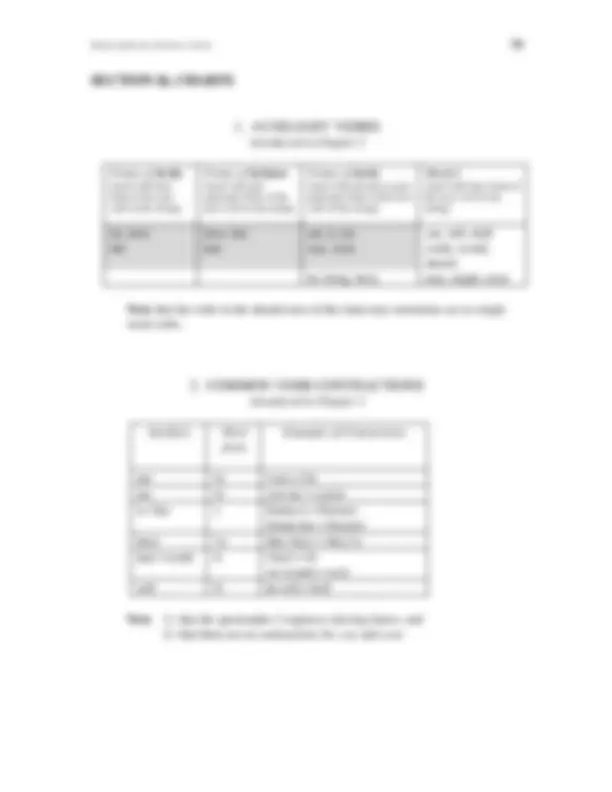
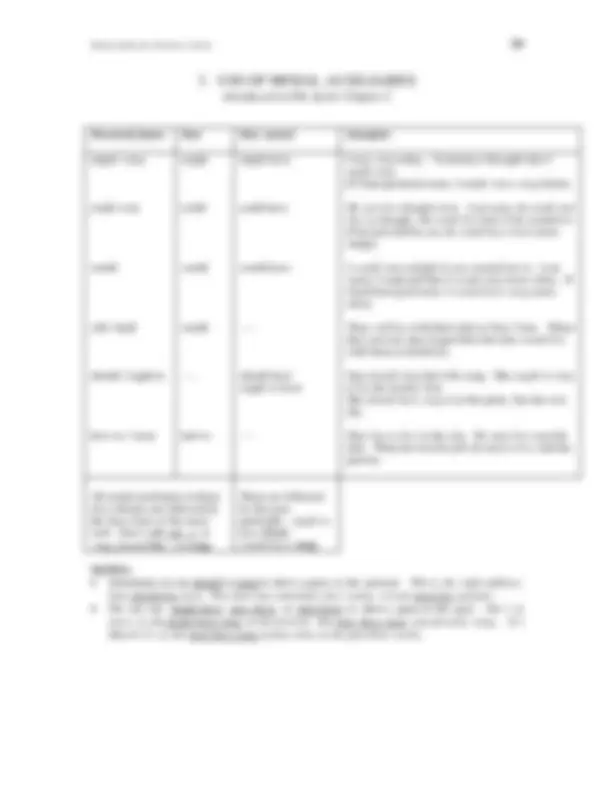
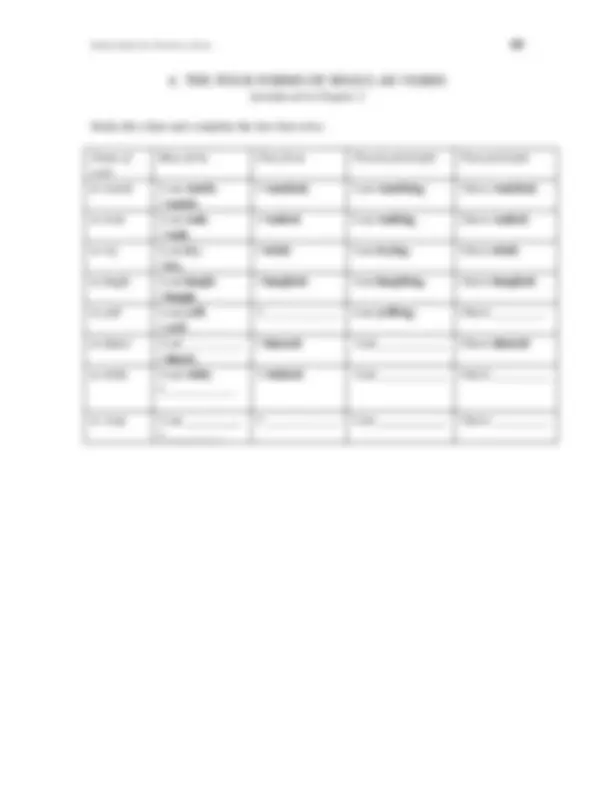
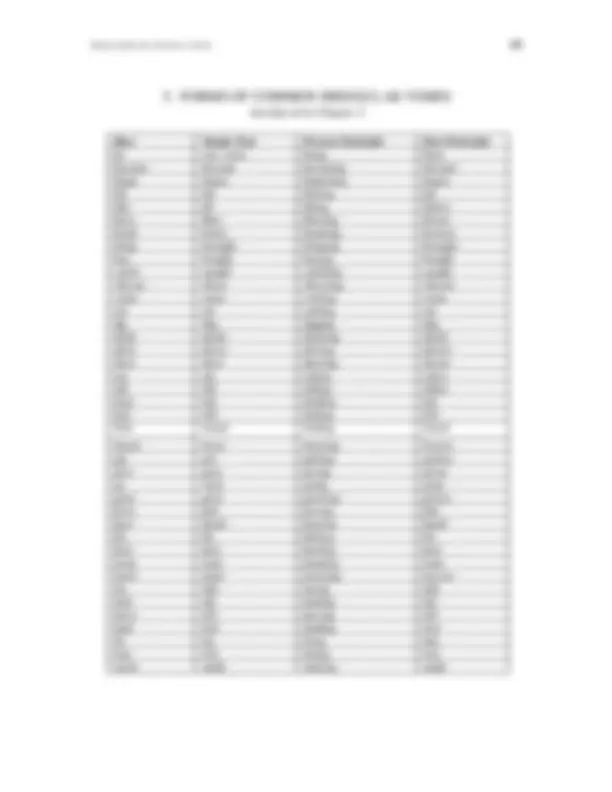

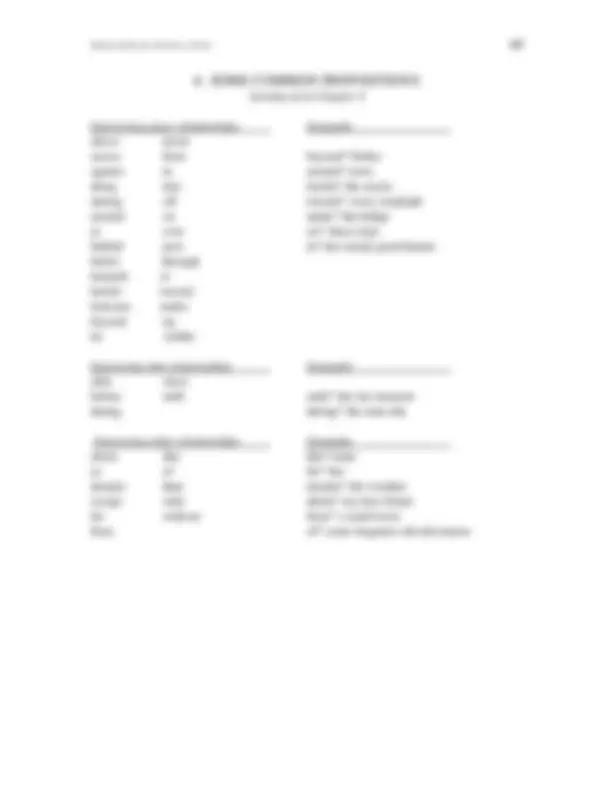
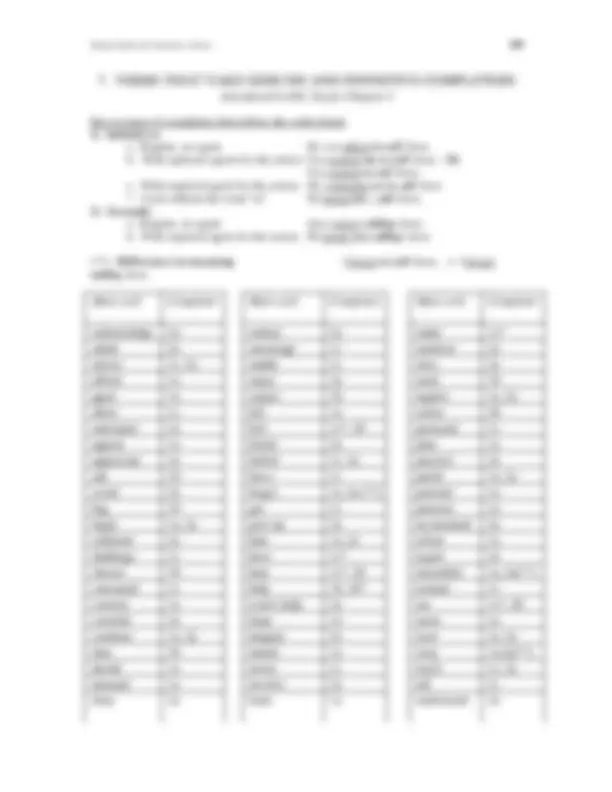

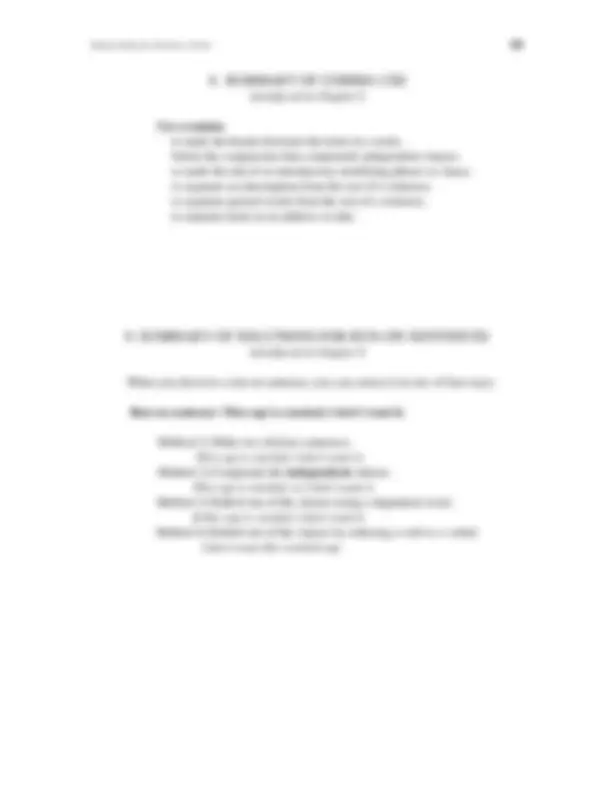
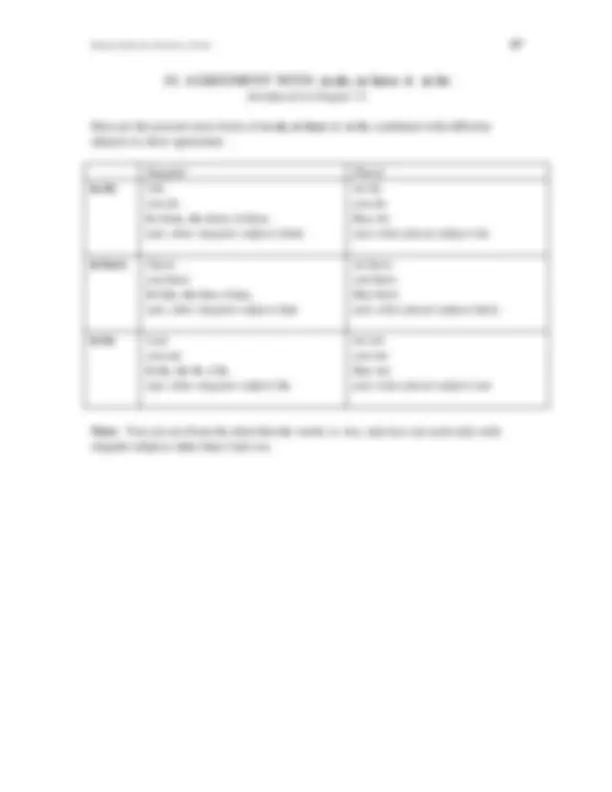
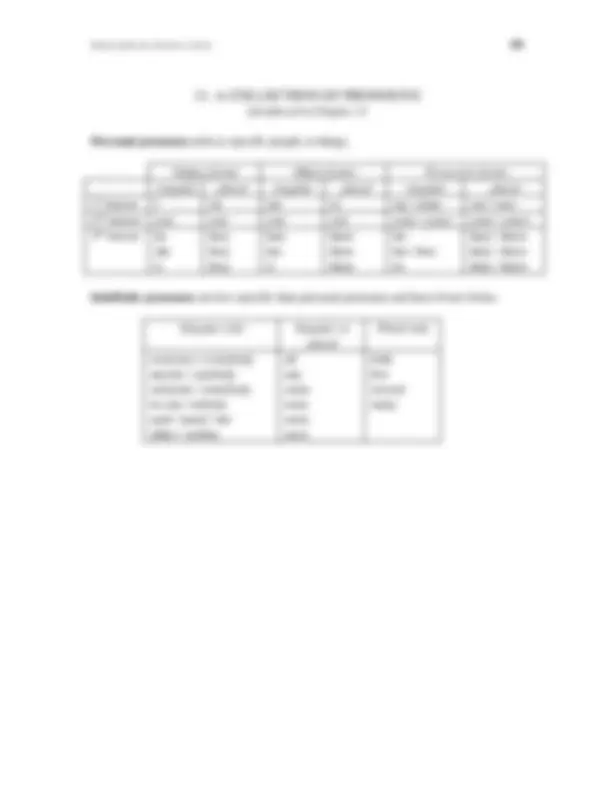
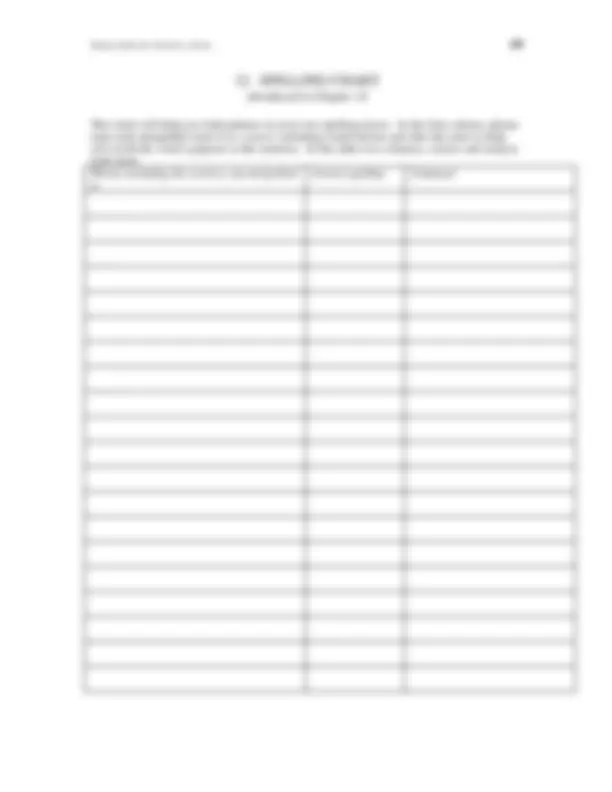
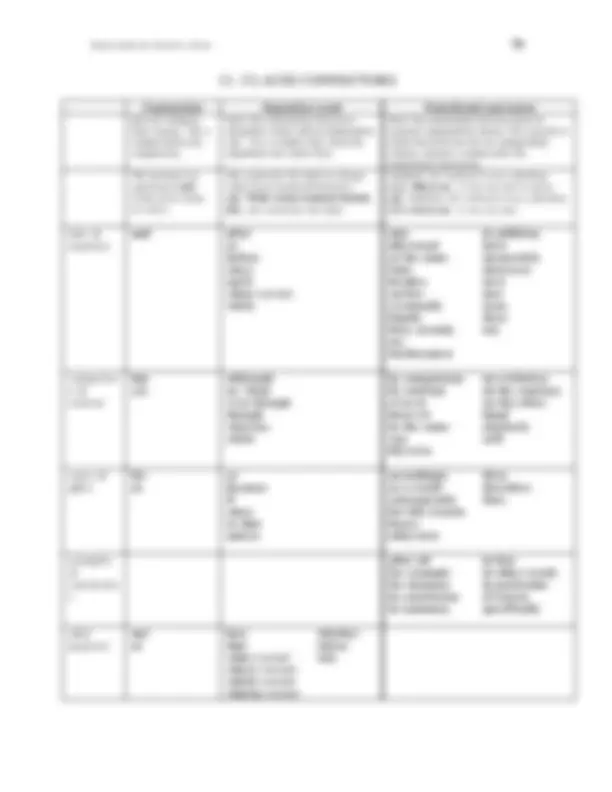
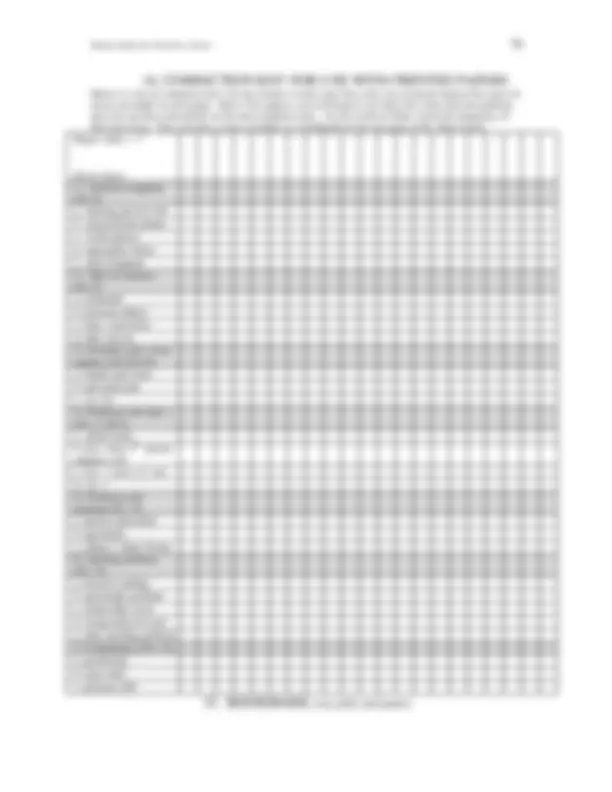
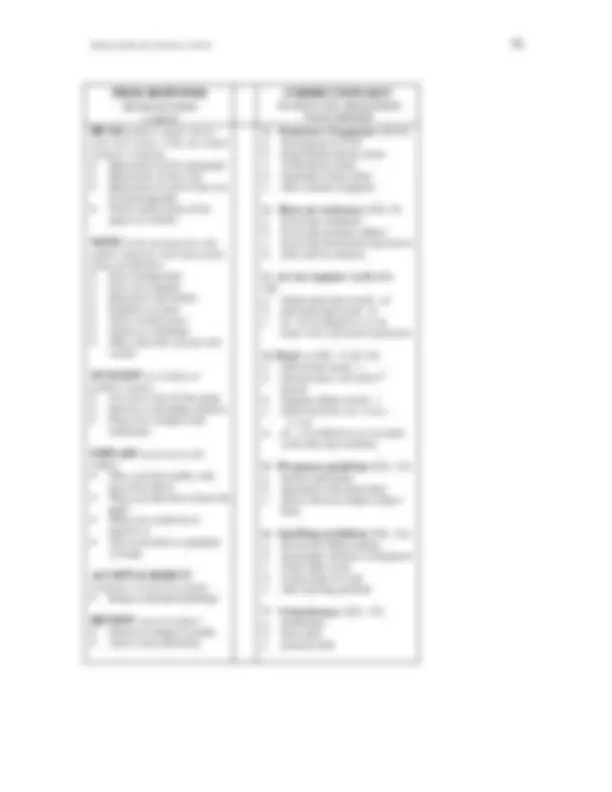


Study with the several resources on Docsity

Earn points by helping other students or get them with a premium plan


Prepare for your exams
Study with the several resources on Docsity

Earn points to download
Earn points by helping other students or get them with a premium plan
Community
Ask the community for help and clear up your study doubts
Discover the best universities in your country according to Docsity users
Free resources
Download our free guides on studying techniques, anxiety management strategies, and thesis advice from Docsity tutors
Material Type: Exam; Class: Integrated Skills III; Subject: English as a Second Language; University: Capital Community College; Term: Unknown 1989;
Typology: Exams
1 / 72

This page cannot be seen from the preview
Don't miss anything!

































































The Four Parts of Sentence Sense : Writing all the way
Each chapter in Sentence Sense begins and ends with writing. The sentences that you write at the beginning of each chapter highlight the grammar structures that you are about to study, and when you return to your writing at the end of the chapter, you’ll be able to analyze how those structures work. By the time you finish the chapters you need, you will have extracted for examination many elements of Standard English and will have then put those elements back where they live, in the flow of words that carry and create meaning.
The text is presented in four parts: Grammar , Usage , Writing , and Resources. The chapters in Part I, Grammar , are descriptive; they show how the parts of English sentences fit together and function. The chapters in Part II, Usage , are prescriptive; they offer advice for changing the way you may be using some sentence parts in order to bring your usage in line with the conventions of Standard English. The chapters in Part III, Writing focus on the way sentences work together in paragraphs, offering techniques and suggestions for clarifying your ideas for different purposes. The charts and links in Part IV, Resources , help you keep information handy and find your way around web pages as the rest of the text unfolds.
The four parts are interconnected. Depending on your interests and on the advice of your teacher or tutor, you may move from one part to another frequently, and you probably will not need to use everything in each part. The introductions to each of the four parts (see the Table of Contents of this Study Guide ) offer more detail about how to mix and balance the parts as you work on this text.
As you move among the parts of the text, independently or with other students, you will fit the resources of Sentence Sense to your needs. Patterns for use of the material will vary widely. However, the core activity is writing. The explanations and exercises throughout the text are grounded in your observations of your own writing. The more you can enact your growing knowledge of Standard English in the paragraphs that you write, the more firmly you will understand what you've learned. More important, the more you write, the better you get at it. Get your word processor or notebook ready from the start.
Sentence Sense in classroom-based study
Sentence Sense encourages classroom activity. While the grammar and usage presentations draw on mechanical interactions that can take place wherever there are computers, the writing assignments call upon human interactions that are often best managed within classrooms. Therefore, the first model for the use of Sentence Sense is that of the classroom supplemented with a computer bank. In this model, students split their course time between classroom and computer activities. They begin paragraphs in class and then take them to the computer for word processing and development. Likewise, they bring questions from their computer work on grammar and usage back to the classroom for clarification.
This model allows teachers to provide maximum guidance, and allows students to consult with and learn from each other directly. One sequence of study is suggested below:
Week s
Part I: Grammar Part II: Usage Part III: Writing
1- 6 --Use Writing sections to introduce structures in class. Can lead to full paragraphs or just brief context for focus on structures. --Go to computers for work on explications and applications, bringing problems back to class. -- In class, use Fun with Grammar sections to provide additional scope, and at the computer use the Review and Practice sections to prepare for the Mastery Tests. --Complete at least Chapters 1-5.
--Introduce sections of Chapter 16 as needed. --Introduce assignments in Chapter 17 as needed. --Apply Peer Responses to Return to Writing sections from Part I and to all assignments from Part III. -- Teachers use the Correction Key (copied from the Part IV Charts section of this Study Guide ) to keep track of the error patterns emerging in each student's writing.
7-16 --Use Chapters 6 & 7 as needed.
--Set up work groups for specific chapters based on identified error patterns. --Confirm individual students' need for chapters with Pretests , and measure progress with Mastery Tests.
--Explore further material in Part III, developing and revising all written work. --Incorporate new knowledge of grammar and usage in the editing of emerging papers. --Use Fun with Writing
looks too easy and use scores to determine which parts of the chapter demand study. --Use Mastery Test to check progress, and identify the chapter's sentence structures in the paragraphs of Return to Writing section.
the Bookmark at the end of the Study Guide****. --Complete Chapter 16, developing the leisure-time activity paper started earlier.
3 --Skim Chapter 6 and study the sections that you need. Consolidate your knowledge of sentence structure by completing Chapter 7.
--Select two chapters to study, based on identified errors. --Take the Pretest for each chapter and use the analysis of the test results to see where to focus within the chapter. --After completing a chapter, take the Mastery Test to measure improvement and to identify areas for further study. At any point, try the Fun with Grammar section to get a new perspective on the chapter's concepts.
--Ask readers to identify the three most common errors in your collected work, using the Correction Key (Chart #15), also summarized on the Bookmark.
4 --Review earlier chapters through their Fun with Grammar activities.
--Study two more chapters that respond to identified needs for error-correction.
--Choose two Topics from Chapter 17 for final compositions.
The Study Guide in this context becomes a map for finding a path through the text. It also serves as a record of progress and a notebook for questions that arise along the way. With clear questions, students can seek answers from colleagues and tutors; and with notes on where they've been, they can figure out where to go next.
Sentence Sense in Distance Learning
Distance Learning (DL) structures allow students to work wherever and whenever they can find access to the internet. Students can work at home in the middle of the night or at the local internet café during lunch hour. Students may work entirely independently or in the context of a DL class. DL is useful for people who can't get to schools easily or whose free time comes in irregular chunks. It appeals to highly motivated students who can stick to a plan for use of unusual time and space opportunities. Although it requires a high tolerance for working alone, it sometimes offers extensive and warm communication with people far away who are engaged in similar work.
The uses of Sentence Sense in DL will vary according to the needs of students and the availability of communication structures for meeting those needs. Sentence Sense alone offers many resources for learning about sentences and compositions. For best use of
If you want: You need: Independent study, using local friends to respond to your writing
A plan for using the materials on the website and in the Study Guide. See above, Sentence Sense in tutorials or lab settings
Communication with a teacher or study group Contact with an institution that provides one more of these: --an electronic bulletin board --plan for exchanging work by e-mail attachments --video conferencing --chat groups
Course credit Registration with an educational institution that will plan assignments in Sentence Sense and will arrange for evaluation of your work.
Writing skills take practice and require human as well as computer interactivity. Writers need readers, and readers are everywhere: on the web, at work, among friends and family. Distance learners in the writing field need to find reading audiences and train them to help. The bookmark at the end of the Study Guide prompts readers to respond constructively to a practicing writer's work, and the Study Guide itself offers a tangible proof of progress after the computer screen fades out.
Using the Study Guide
The Study Guide has several purposes. First, it provides a resource for writing and reference when you are away from your computer. Second, it serves as a compass to guide you through the pages of the online text. Third, it gives advice about how to take best advantage of Sentence Sense and offers some special tips for ESL students. Finally, the Study Guide is portable: you can keep it beside you at the computer, take it to class, or work with it at the busstop. You can mark it up with your notes, your questions, or records of your progress. It complements the online text: the online text provides a means of screen-based interaction with a computer, while the Study Guide simplifies face- to-face interaction with other people and encourages reflection on your own ideas.
From here on, the Study Guide is organized on chapter-by-chapter basis. The chapter notes reprint the preview and the writing sections of each chapter so that you can work on them away from your computer and refer to them easily while you’re working online. In addition, the chapter notes give advice about possible online problems. Orient yourself to the use of the Study Guide by working through Chapter One with the Guide beside
you at the computer. After that, take the chapter notes with you when you go to your computer, and as you work on the screen, use the printed pages to steer your online navigation.
On scrap paper, jot down ideas about how it feels to write. Here are some questions that may start you thinking:
How tightly are you holding your pen or pencil? How do your shoulders feel? What do you think about when you face the blank page? How is writing different from talking?
You may answer some of these questions, or simply write down any thoughts that come into your head when you consider how the act of writing affects you. Turn those jottings into four or five sentences, and then rewrite them. For your rewritten paragraph, use pen and paper, a word processor, or a class bulletin board, depending on your class’s arrangements.
Orientation tip
GROWING SENTENCES--A Comparison
Sentences grow. (seed of sentence, subject & verb)
These sentences grow. Sentences on this page grow. Starting from seeds, sentences grow. Sentences that sprout modifiers grow.
(modifiers for the subject)
Sentences grow easily. Sentences grow before your eyes. Sentences grow to develop sturdy shapes. Sentences grow until they seem to gather a momentum of their own.
(modifiers for the verb)
Sentences grow branches. Sentences grow new branches. Sentences grow branches of words. Sentences grow branches unfolding fresh ideas. Sentences grow branches that may blossom with unexpected possibilities.
(additional completer, with modifiers for the completer)
Starting from seeds, these sentences that sprout modifiers grow easily before your eyes until they seem to gather a momentum of their own. To develop sturdy shapes, sentences grow new branches of words, unfolding fresh ideas that may blossom with unexpected possibilities
(combination of all ideas into two sentences)
In the sentences below, look at the words in this bold font. (In the online text, these words would be green.) What do all these words have in common? Now look at the words in CAPITALS. (In the online text, these words would be purple.) What do these words have in common with each other?
Sentences GROW. Love DECEIVES, Someone IS PAINTING. Kenisha MUST HAVE FORGOTTEN. WERE they HIDING?
The seed of a sentence is made of a subject and a verb. Chapter 2 focuses on verbs and Chapter 3 focuses on subjects.
In the sentences below, look at the underlined words. What do these words have in common?
Sentences GROW branches. Love DECEIVES people. Someone IS PAINTING grafitti. Kenisha MUST HAVE FORGOTTEN Donnell. WERE they DOING anything?
Sometimes a third part may join the subject/verb seed to complete the sentence's idea. The underlined words above are completers. Chapter 4 examines what completers do.
In sentences 13-16, add a word or group of words in each space. Whatever you add will be a modifier or part of a modifier, so write it in slanted letters.
When you have completed the sixteen sentences above, look them over and notice how the marking code identifies the four parts of each one. When you work online with the chapters that follow this one, you’ll be concentrating on one sentence part at a time, so you won’t see whole sentences written out in this code. Therefore, take this opportunity to see how all the parts fit together in the sentences that you have completed above.
Orientation tips
Return to the paragraph that you wrote at the beginning of this chapter. Read it aloud. Pick one sentence and identify its subject and verb, and see if the sentence contains a completer or modifier. The next five chapters in Sentence Sense will offer you chances to look more closely at words and groups of words performing these four sentence functions, each one contributing to the growth of a whole sentence.
Orientation tips
Chapter 2: VERBS
CHAPTER PREVIEW A sentence contains two essential parts: a verb and a subject. Recognizing the verb is the key to analyzing a sentence. Further, knowing how verbs work allows you to make intelligent choices among verb forms as you write.
In Chapter 2, you will learn that:
go on to the next one and jot notes in the margins of this Study Guide about any problems that you’ve had. Bring these problems to your teacher’s attention.
Read aloud the paragraph you wrote at the beginning of this chapter. Where are the verbs? Look for the words that indicate time. Which are verbs and which aren’t? Use Chart 1 in the Resources section of this Study Guide to help you find the auxiliaries in your paragraph. Wherever you find one, check to see if a main verb follows. Where you're not sure of a verb, turn the sentence into a negative statement and use the not or n't as a flag that waves in the middle of your verb. Mark all your verbs. Have you used any compound verbs? Trade marked paragraphs with a classmate, and check each other's work. Wherever you disagree, explain your reasons. Raise questions and get a tutor or teacher to answer them.
Chapter 3: SUBJECTS
CHAPTER PREVIEW In a sentence, every verb needs a subject. Once you have found a verb in a sentence, you can identify its subject if you know the typical relationships between verbs and subjects. Recognizing the subjects of your sentences makes it easier for you to clarify and develop your ideas in writing.
In Chapter 3, you will learn that
Recall an experience from your past (for instance, meeting someone important to you, leaving home, an accident, a surprise, or an adventure). Concentrate on just one incident. Picture yourself as you were then, and try to remember how you felt. Recall the people and things around you, the smells, the sounds, the weather, and so on. On scrap paper, jot notes and freewrite, getting down all that you can remember about that experience.
Arrange what you've written into the first few sentences of a paragraph, selecting the details you think are most important. Use the word I at least three times in your story. For example, your paragraph might start like this: When I was ten, I met my grandparents from Italy for the first time. I was so excited and scared about their coming that I could hardly eat for a week in advance...
Now imagine that someone else is telling this same story about you. Cross out I wherever you've used it, and write in either your name or he or she. Make any other changes necessary for the story to sound as if someone else is telling it. For example:
Monica she her When [I] was ten, [I] met [my] grandparents from Italy for the first She she time. [I ] was so excited and scared about their coming that [I] could hardly eat for a week in advance...
Many of the words that you change will be subjects.
If your teacher or study group would like you to develop this exercise into a longer narrative paragraph, please revise it double-spaced on a fresh piece of paper, a word processor, or a class bulletin board.
Take a few minutes to observe the room around you. Notice specific objects, the light, the space, and the atmosphere of the place. Look closely for details, including those that seem unimportant at first, like a shadow on the wall or the rumble of the air conditioner. On scrap paper, jot down all your observations, organizing them into related clusters. (For an introduction to clustering, see Chapter 16, step 2 of Your Writing .)
Use the clusters of observations to help you write a paragraph that conveys a picture of the room. Start your first sentence with these words: "When I walk into ____________ , the first thing I notice is... ." Go on from there.
Looking at your first sentence, put [square brackets] around the word or phrase that you've written after "the first thing I notice is... " This is probably a completer. In the next few sentences, look for words that describe other words. Underline these words. These are probably modifiers. Try to decide which other word in the sentence each modifier describes. When you finish Chapter 4, you'll be able to find the rest of the completers and modifiers in your paragraph.
If your teacher or study group would like you to develop this exercise into a longer descriptive paragraph, please revise it double-spaced on a fresh piece of paper, a word processor, or a class bulletin board.
ADVICE
Read aloud the paragraph you wrote at the beginning of this chapter. Mark two more completers and five more single-word modifiers. Look for two prepositional phrase modifiers. For each modifier, show what word it's modifiying. Trade papers with a classmate and check each other's work. Don't be afraid to disagree; grammarians disagree all the time.
Chapter 5: EMBEDDED THOUGHTS
CHAPTER PREVIEW Some groups of words that look like sentences are really dependent clauses. Some words that look like verbs are really verbals. A dependent clause or a verbal phrase may express a thought that is not able to stand on its own but has become embedded in a larger sentence structure. Understanding how thoughts become embedded will help you to combine ideas and discover relationships among them through your writing.
In Chapter 5, you will learn that:
YOUR WRITING Think about something that irritates you (for example: your neighbor's radio playing at 2:00 A.M., the way a relative gives you advice you don't ask for, the smell of peanut butter cookies, the way your roommate leaves the milk on the table to spoil.. .). How do you respond to that irritation and why? What would you like to do about it? On scrap